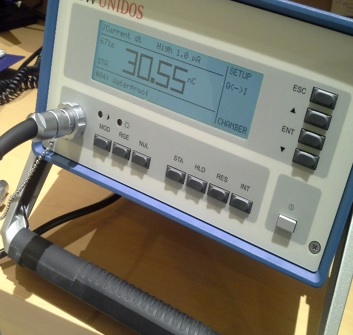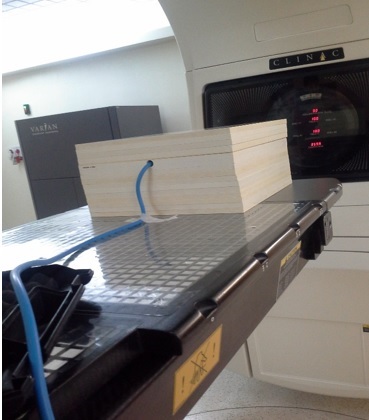WARM UP AND INSPECTION OF LINEAR ACCELERATORS (LINAC) AND SIMULATORS
Home > Radiation Protection and Quality Assurance > Equipment Use & Quality Assurance > Quality Control Procedures > Warm Up And Inspection Of Linear Accelerators (Linac) And Simulators
Can we please get your advice on this one question?
Introduction
Warm-up and inspection of linear accelerators is very essential in radiation therapy to verify the accuracy of the machines and emission of proper radiation during treatment. Daily morning warm-up can take 10 to 30 minutes. It includes measurements of beam output, beam profiles, beam energy and determination of beam flatness and symmetry. The inspection of linear accelerators and simulators is done during and after installation. After installation it can be done daily, weekly, monthly or annually.
Inspection during installation
According to TG-45, the following facilities should be properly installed before a linear accelerator starts operating and a medical physicist should inspect to ensure they are all functional.
- Radiation warning signs
- Door interlocks
- Audio and video equipment
- Warning lights and that are connected to the machine’s console
- Emergency power failure illumination
Daily morning warm-up and inspection
Daily morning Linac warm up and inspection is done before the first treatment of the day. The tests are divided into three: dosimetry, mechanical and safety. Dosimetry test involves delivery of 300 to 500MU per photon energy and the subsequent photon and electron dosimetry values of the central axis at SSD of 100cm are recorded. A tolerance of 3% is allowed. In mechanical test the following checks are carried out: localizing lasers, collimator rotation with the central axis and Optical Distance Indicator (ODI). On localizing lasers, sagittal and lateral lasers are aligned with the horizontal and vertical marks on the walls. Tolerance for lasers is ±2mm (that is, ±1mm) for both sets of the lasers. A check on collimator rotation with the central axis is also done and a tolerance of ≤2mm is allowed according to TG-142 report. Safety checks include: door interlocks and audiovisual monitors, they are tested if they are functioning. Planar and Cone-beam imaging are also tested both in kV and MV. Collision interlocks should be functional and tolerance for positioning/repositioning should be ≤2mm in both imaging. This is according to TG-142 report.
Weekly inspection
Weekly linear accelerators inspection involves dosimetry and mechanical tests. Beam/field size and mechanical alignment are the first tests. This is because any deviation on beam or mechanical alignments can influence the dosimetry outcome. Then photon and electron dosimetry output values and the wedge factors tests are conducted. A dose of 100MU is delivered thrice and a PTW Farmer chamber is used to check the Linac output and a PTW UNIDOS electrometer is used to measure the dosimetry values. The dosimetry checks are done with calibrated dosimetry equipment, a solid water-equivalent phantom and an ionization chamber. Gantry angle and collimator isocenters are also checked, a tolerance of ≤2mm and a deviation of 1mm are allowed according to TG-142 report.

A PTW UNIDOS Electrometer

A Solid-water Equivalent Phantom with an Ionization Chamber
· Monthly inspection
Monthly inspection includes a complete and extensive measurement of dosimetry, mechanical/optical and safety aspects. On dosimetry checks it includes tests on photon and electron output constancy, wedge factor constancy, photon and electron beams flatness constancy, photon and electron beam symmetry and calibration of daily output dosimeter. On mechanical it includes checks on the mechanical system, image-forming and image detection system, couch accuracy, accuracy of gantry movement, accuracy of lasers, accuracy of cross wires and collimators and radiation field coincidence. Door interlocks, anti-collision devices, optical distance indicator accuracy and emergency stop buttons are checked under safety aspects.
· Annual inspection
Annual inspection includes a larger sampling of monthly inspection, beam characteristics, planned maintenance and analysis of all saved quality assurance worksheet files. It involves use of a large 3D water phantom to measure beam profiles and depth dose curves. Planned maintenance checks are also done to keep the system at correct operating conditions and to make sure that the equipment continues to operate for as long as possible without unplanned corrective maintenance.
References
1. International Journal of Sciences: Basic and Applied Research. Quality Assurance and Performance Evaluation of an Elekta Linear Accelerator.
2. Ravinder Nath; Peter J. Biggs; Frank J. Bova; Clifton Ling; James van de Geijn and Martin S. Weinhouse. 1994. AAPM Code of Practice of Radiotherapy Accelerators.
Home > Radiation Protection and Quality Assurance > Equipment Use & Quality Assurance > Quality Control Procedures > Warm Up And Inspection Of Linear Accelerators (Linac) And Simulators
FREE Infographic What successful people believe. What successful people do
Dictionary of Cancer Terms
Need help understanding a word? Here is an electronic resource that gives meaning to Cancer terms and their usage.

StrengthsFinder 2.0